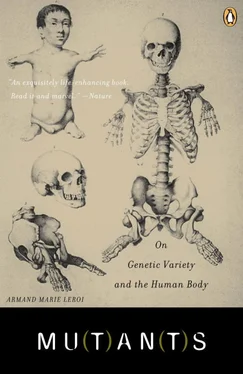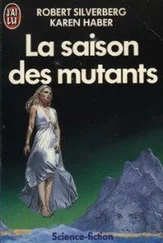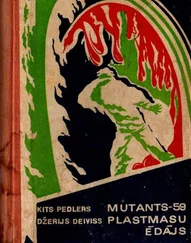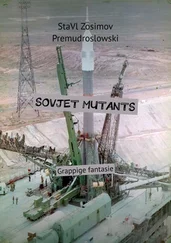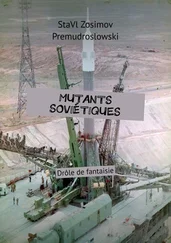Collins-Schramm, H.E. 2002. Ethnic-difference markers for use in mapping by admixture linkage disequilibrium. American Journal of Human Genetics 70: 737–50
Colvin, J.S. et al. 1996. Skeletal overgrowth and deafness in mice lacking fibroblast growth factor receptor 3. Nature Genetics 12: 391–7
Comfort, A. 1964. Ageing: the biology of senesence. Holt, Rinehart and Winston. N.Y.
Conner, M. and M. Ferguson-Smith. 1993. Essentials of medical genetics. (5th ed.) Blackwell Science, Oxford
Conte, F. A. et al. 1994. A syndrome of female pseudohermaphroditism, hypergonadotropic hypogonadism, and multicystic ovaries associated with missense mutations in the gene encoding aromatase (P450 arom). Journal of Clinical Endocrinology and Metabolism 78: 1287–92
Corcoran, J. 1998. What are the molecular mechanims of neural tube defects? Bioessays 20: 6–8
Corder, E.H. et al. 1993. Gene dose of apololipoprotein E Type 4 allele and the risk of Alzheimer’s disease in late onset families. Science 261: 921–3
Cornaro, L. 1550 (1903). The art of living long: a new and improved English version of the treatise by the celebrated Venetian centenarian, Louis Cornaro with Essays by Joseph Addison, Lord Bacon and Sir William Temple. W.F. Butler, Milwaukee
Cotsarelis, G. and S.E. Millar. 2001. Towards a molecular understanding of hair loss and its treatment. Trends in Molecular Medicine 7: 293–301
Crackower, M.A. et al. 1998. Defect in the maintenance of the apical ectodermal ridge in the Dactylaplasia mouse. Developmental Biology 201: 78–89
Crawfurd, J. 1827. Journal of an embassy from the Governor-General of India to the court of Ava in the year 1827. V.i.H. Colburn. London
Crosby, J.L. et al. 1992. Disorganisation is a completely dominant gain-of-function mouse mutation causing sporadic developmental defects. Mechanisms of Development 37: 121–6
Crow, J.F. 2000. The origins, patterns and implications of human spontaneous mutation. Nature Reviews Genetics 1: 40–7
Danerow, H. 1830. Ueber Ritta-Christina und die Siamesen. Litterarishcen Annaleen der gesammten Heilfyunde 16: 454–82
Darwin, C. 1859 (1968). The origin of species by means of natural selection. Penguin, Harmondsworth, UK
Darwin, C. 1871 (1981). The descent of man, and selection in relation to sex. Princeton University Press, Princeton, N.J.
Darwin, C. 1882. The variation of animals and plants under domestication , 2nd ed. John Murray, London
Dasen, V. 1993. Dwarfs in ancient Egypt and Greece. Clarendon Press, London
Dasen, V. 1994. Pygmaioi. text pp.594–601; plates pp.466–86. Lexicon Iconographicum Mythologiae Classicae VIII: 1 (text); 2 (plates)
Dasen, V. 1997. Multiple births in Graeco–Roman antiquity. Oxford Journal of Archaeology 16: 49–61
Dasen, V. 2002. Les jumeaux siamois dans l’Antiquité classique: du mythe au phénoméne de foire. La Revue du Practicien 52: 9–12
Daston, L. and K. Park. 1998. Wonders and the order of nature 1150–1750. Zone, N.Y.
De Luca, F. and J. Baron. 1999. Control of bone growth by fibroblast growth factors. Trends in Endocrinology and Metabolism 10: 61–5
De Quatrefages, A. 1895. The pygmies (trans. F. Starr). Macmillan, London
De Vijlder, J. et al. 1999. Defects in thyroid hormone supply. Ch. 16b. The Thyroid and Its Diseases. http://www.thyroidmanager.org
Del Campo, M. et al. 1999. Mondactylous limbs and abnormal genitalia are associated with hemizygosity for the human 2q31 region that includes the HOXD cluster. American Journal of Human Genetics 65: 104–10
Delange, F. and B. Hetzel. 2000. The Iodine Deficiency Disorders. Ch. 20. The Thyroid and Its Diseases. http://www.thyroidmanager.org
DeRobertis, E. and Y. Sasai. 1996. A common plan for dorsoventral patterning in Bilateria. Nature 380: 37–40
Diamond, J.M. 1982. Big-bang reproduction and ageing in male marsupial mice. Nature 298: 115–16
Diamond, J.M. 1991. Why are pygmies so small? Nature. 354: 111–12
Didde, R. 2002. Wetenschap. Volkskrant 25 May 2002
Dikötter, F. 1992. The discourse of race in modern China. Hurst, London
Dikötter, F 1997. Hairy barbarians, furry primates, and wild men: medical science and cultural representations of hair in China. in Hiltebeitel, A. and B. D. Miller (eds) Hair: its power and meaning in Asian cultures. SUNY Press, Albany, N.Y.
Dikötter, F. 1998. Imperfect conceptions: medical knowledge, birth defects, and eugenics in China. Hurst, London
Dobson, J. 1958. Marie Sabina, the variegated damsel. Annals of the Royal College of Surgeons 22: 273–8
Dollé, P. et al. 1993. Disruption of the Hoxd-13 gene induces localised heterochrony leading to mice with neotenic limbs. Cell 75: 431–41
Donnai D and R.M. Winter 1989. Disorganisation: a model for ‘early amnion rupture’? Journal of Medical Genetics 26: 421–5
Dreger, A.D. 1998. Hermaphrodites and the medical invention of sex. Harvard University Press. Cambridge, Mass.
Dudley, A.T. et al. 2002. A re-examination of proximodistal patterning during vertebrate development. Nature 418: 539–44
Durham-Pierre, D. et al. 1994. African origin of an intragenic deletion of the human P gene in tyrosine positive oculocutaneous albinism. Nature Genetics 7: 176–9
Egenvall, A. et al. 2000. Age pattern of mortality in eight breeds of insured dogs in Sweden. Preventative Veterinary Medicine 46: 1–14
Eigenmann, J.E. 1987. Insulin-like growth factor 1 in dogs. Frontiers of Hormone Research 17: 161–72
Eigenmann, J.E. et al. 1988. Insulin-like growth factor 1 levels in proportionate dogs, chondrodystrophic dogs and in giant dogs. Acta Endocrinologica (Copenhagen) 118: 105–8
Eigenmann, J.E. et. al. 1984. Body size parallels insulin-like growth factor 1 levels but not growth hormone secretory capacity. Acta Endocrinologica (Copenhagen) 106: 448–53
Emery, A.E.H. 1996. Genetic disorders in portraits. American Journal of Medical Genetics 66: 334–9
Epstein, C.J. et al. 1987. Transgenic mice with increased Cu/Zn-superoxide dismutase activity: animal model of dosage effects in Down syndrome. Proceedings of the National Academy of Sciences USA 84: 8044–8
Eyre-Walker, A. and P.D. Keightley. 1999. High genomic deleterious mutation rates in hominids. Nature 397: 334–47
Farrell, H.B. 1984. The two-toed Wadoma – familial ectrodactyly in Zimbabwe. South African Journal of Medicine 65: 531–3
Fãsseler, P.E. and K. Sander. 1996. Hilde Mangold (1898–1924) and Spemann’s organiser: Achievement and Tragedy. Wilhelm Roux Archives of Developmental Biology 205: 323–32
Felgenhauer, W.–R. 1969. Hypertrichosis lagnuinosa universalis. Journal de Génétique humaine 17: 1–44
Ferretti, P. and C. Tickle. 1997. The limbs, in P. Thorogood (ed.) Embryos, genes and birth defects. John Wiley and Sons, N.Y.
Figuera, L.E. 1995. Mapping of the congenital generalised hypertrichosis locus to chromosome Xq24-q27. 1. Nature Genetics 10: 202–6
Finch, C.E. 1990. Longevity, senescence and the genome. Chicago University Press
Finch, C.E. and G. Ruvkun. 2001. The genetics of ageing. Annual Reviews of Genomics and Human Genetics 2: 435–62
Fischer, J.L. 1972. Le concept experimental dans l’oeuvre tératologique d’Etienne Geoffroy Saint-Hilaire. Revue d’histoire des sciences 25: 347–62
Читать дальше
